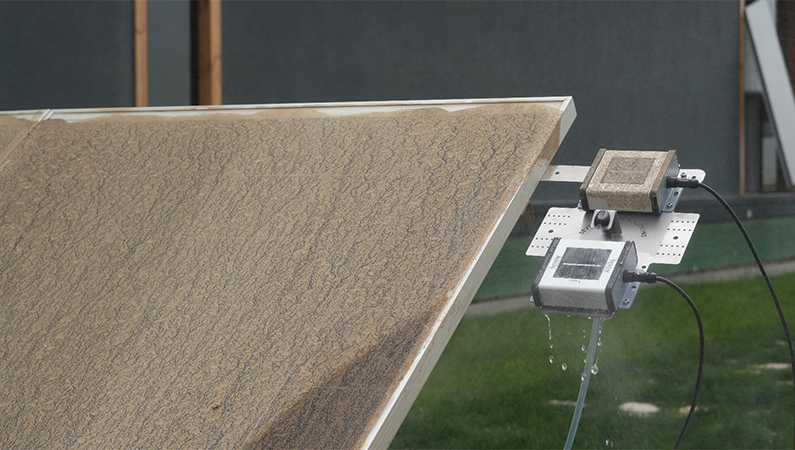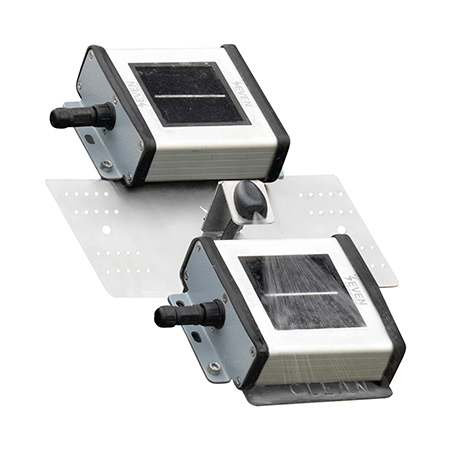Your cart is currently empty!
Soiling Impact on Photovoltaic Panel Performance

Solar energy is clearly one of the most used renewable energy sources nowadays. However, monitoring the efficiency of the photovoltaic panels remains an important challenge for users. Soiling, which is the accumulation of dust, dirt, and other particles on the surface of the PV panels, is considered one of the main factors affecting the PV panels’ performance. This accumulation has the ability to block the sun’s rays from reaching the solar cells, resulting in reduced energy production. Therefore, understanding the impact of dirt or dust on PV panels and using the appropriate equipment to address this issue can help improve energy efficiency and minimize maintenance costs.
How Soiling Affects PV Panel Performance
When dust and other particles accumulate on PV panels, they tend to reduce the amount of sunlight that reaches the solar cells, which limits their ability to perform as expected and generate electricity. As per research, depending on environmental conditions, the energy loss can range from 5% to significant rates due to dirt and soiling. Especially in dusty areas such as deserts, dust can build up faster on PV panels, leading to a severe drop in power production if they are not properly maintained.

The bad news is that reducing energy production is not the only effect, soiling can also cause uneven shading on PV panels, which leads to hotspots that occur when some cells receive sunlight normally and others are covered in dust. This event causes temperature differences across the panel over time which damages the panel and shortens its lifespan.
Factors Influencing Soiling Levels
Many factors contribute to the rates of dust accumulation on PV panels
- Location: PV systems in areas with high levels of dust such as deserts or industrial zones, dust accumulates quicker than PV systems in cleaner environments.
- Panel Angle: Flat or low tilt panels collect more dust compared to higher tilt angled panels where the particles slide off easily due to gravity.
- Weather conditions: High humidity enables the dust to stick to panels, making it hard to remove, while occasional rain can act as a natural panel cleaning tool.
- Dust Type: Some particles such as pollen or industrial residues can be more difficult to clean compared to dry and loose dust.
- Surroundings: PV systems installed near highways, agricultural fields, or factories are more exposed to floating dust in the area.
- Bird Droppings: Birds can contribute to soiling on PV panels, as their droppings can accumulate over time, potentially affecting the panel’s performance. In areas where bird activity is frequent, additional cleaning may be required to prevent performance loss due to bird-related soiling.
The Role of Soiling Sensors in Optimizing PV Performance
Soiling sensors have been developed to be effective for monitoring dust build ups on PV panels. These innovative devices provide real time data on dust levels, allowing users or operators to determine the best maintenance times. Therefore, instead of cleaning the panels on a fixed schedule, soiling sensors allow the frequency of cleaning to be optimized which reduces costs while ensuring high PV performance.

Benefits of Using Soiling Sensors
- Real time monitoring: Soiling sensors continuously measure dust accumulation, and warn operators when efficiency drops below certain levels.
- Optimized maintenance planning: By having correct soiling data, cleaning companies and PV operators will be able to schedule cleaning based on the actual level of dirt without overcleaning that damages the panels over time.
- Save costs: Automated monitoring minimizes the need for frequent manual inspections which lowers maintenance costs.
- Long term performance: Historical data collected by soiling sensors helps to identify patterns of dust accumulation, which gives clear perspectives for operators to estimate cleaning times and strategies over time.
IEC Standard for Soiling Monitoring
The International Electrotechnical Commission has established standards to guide the performance and evaluation of soiling monitoring systems. For example, the IEC 61724-1: 2021, which addresses performance monitoring for PV systems highlights the importance of measuring the effect of soiling, especially in areas with high dust accumulation. The standard emphasizes the need for accurate and reliable data to assess the impact of soiling on energy production.

Soiling remains a major obstacle to maximizing the efficiency of solar panels, because it reduces energy output and can lead to long term damages, Therefore, soiling sensors provide an innovative solution by offering both real time monitoring and data driven maintenance strategies. By using these sensors, PV panel operators can optimize system performance, extend the panel’s lifespan, and make solar energy a more reliable and cost-effective source.